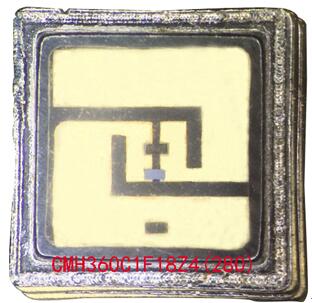For the subdivision application extended by LEDs - UV LEDs that produce ultraviolet light have a wide range of applications, and the market has huge opportunities for volume! From the application of the most grounded gas, the UV light used in the printing field is almost completely covered, and the covered application will be further deepened, that is, the UV mercury lamp and the UV metal halide lamp are gradually replaced by the UV LED, just around the corner. The ultraviolet light in the sunlight in nature is the most effective and cheap source for air, water, surface purification, sterilization and bacteriostasis. It is one of the “thick gifts†that nature has given to human existence. Through technical means, the correct use of ultraviolet light (light), the rational use of ultraviolet light (light), the function of ultraviolet light (light) to the extreme, become human welfare. Ultraviolet (light): Ultraviolet (light) is divided into three bands from the professional field by wavelength: 1. Wavelength: 315nm-380nm segment is long-wavelength ultraviolet light, referred to as "UVA"; 2. Wavelength: 280nm-315nm segment is medium-band ultraviolet light, referred to as "UVB"; 3. Wavelength: 280nm-315nm segment is short-wavelength ultraviolet light, referred to as "UVC"; From a technical point of view, ordinary blue LEDs basically use GaN as a light-emitting material, but since the band gap of GaN is 3.4 eV, radiation having a wavelength of less than 370 nm generated inside the chip is absorbed by GaN. Therefore, UV-LEDs mostly use AlGaN as a light-emitting material. However, AlGaN LEDs require a coating layer with a larger band gap, resulting in higher threading dislocation density, resulting in lower luminous efficiency. As the wavelength of the radiation peak decreases, the external quantum efficiency of the UV- LED chip gradually decreases. That is to say, to obtain shorter wavelengths, the technical difficulty is greater, and it is necessary to engage in a process of continuous breakthrough of application technology research by UV-LED chip manufacturers. At the same time, it is also necessary to discover and obtain continuous convergence in the field of material research. It is possible to reach the depth of application of large-area and multi-domain UVLEDs, so that UV LED energy can continuously serve human beings. UV LED has become the main means of disinfection, sterilization, bacteriostasis and even become a medical field. It is slowly opening up, and this "door" has not fully opened up to the full application, in terms of sterilization, bacteriostatic and disinfection. Sharing some of the immature views of using the "third eye", I also took the opportunity to make a fuss to the peers and technology bulls. UV light source (UV LED) Most of the currently known and existing applications use UVC band ultraviolet light (280nm-315nm) to achieve sterilization and bacteriostatic. The broad spectrum of ultraviolet light can effectively kill various microorganisms, bacteria and even It is a virus, such as a bacterial propagule, a spore, a mycobacterium, a virus, a fungus, a rickettsia, and a mycoplasma. First, the mechanism of ultraviolet light sterilization 1. Destroy genetic material The reproduction and inheritance of bacteria and viruses are based on DNA (deoxyribonucleic acid) and RNA (ribonucleic acid). The ultraviolet light in the UVC band can effectively break or modify the nucleic acid structure and function of cells and viruses. The nucleic acid absorption spectrum is almost exactly consistent with the bactericidal spectrum of ultraviolet light. The nucleic acid is a plurality of nucleotide chains linked by phosphodiester according to the principle of base pairing of purine and pyrimidine. These substances have strong absorption of ultraviolet light. And the maximum amount of absorption in the 250-270nm band. It can be seen that when the bactericidal 253.7 nm ultraviolet light irradiates the microorganism, the absorbed light acts on the nucleic acid, and the energy of the ultraviolet photon is absorbed by the base pair in the DNA, destroying one or several of the nucleic acid molecules. Chemical bonds, which cause the decomposition or altered nature of nuclear proteins or nucleic acids, resulting in the synthesis of proteins and enzymes in bacteria or viruses, causing them to die or unable to continue to breed offspring, achieving the purpose of sterilization and inhibition. 2. Affecting enzyme activity The ultraviolet light emitted by UV LEDs can also affect the activity of many enzymes in bacteria and viruses, causing changes in the structure and function of protein molecules, interfering with the synthesis of proteins and nucleic acids, and also reducing the toxicity, activity and even death of bacteria or viruses. 3. Destruction of protein If the light emitted by the UVLED reaches the 185 nm band radiation, the O? in the air is ionized to generate oxygen free radicals and ozone. Both of these factors have strong oxidizing effect, causing the protein to denature and the bacteria and viruses to lose metabolism. Causes the death of bacteria or viruses. For Moto Glass,Moto G50 Screen Glass,Motorola Edge Screen Glass,Motorola Front Glass Dongguan Jili Electronic Technology Co., Ltd. , https://www.jlocaglass.com